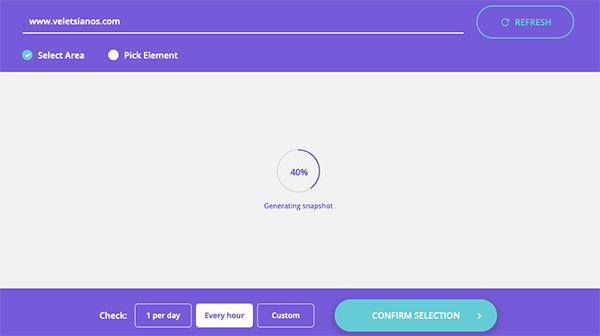At this year’s Congress of the Humanities and Social Sciences, I gave a keynote talk as part of a keynote panel for the Open/Technology in Education, Society, and Scholarship Association, with Dr. Valerie Irvine and Dr. Bonnie Stewart. Below is a draft transcript of my comments.
Good morning everyone. Thank you to Michele Jacobsen (U of Calgary) and Anne-Marie Scott (Athabasca U) for putting together the excellent OTESSA program, and thank you to you all for joining us in our inaugural OTESSA conference. Today I’ll be talking about 4 e’s: effectiveness, efficiency, engagement, and equity.
I was going to talk about a paper that my colleagues and I wrote where we examined Canadian faculty experiences during the pandemic, but I changed my mind last night. I couldn’t sleep and I thought that there are more important and more urgent things to talk about. If you’re interested in that paper, you can read about it in the link that I put in the chat: https://doi.org/10.1111/bjet.13065
But, what might you say can be more important, more urgent, that the painful, anxiety-ridden, and inequitable experiences that faculty have gone through the pandemic?
As you have heard in the introduction of this session, a mass grave containing the remains of 215 children has been found in Tekamploos te sech-ewpmech, at the site of a residential school to what is now known as Kamloops, BC.
So, I would like to begin by acknowledging that the neighborhood where I live, Royal Roads University, are on the territory of the Lekwungen peoples, the Xwsepsum, and the Esquimalt Nations. As a guest, I am grateful to live and work on these lands. I want to take this opportunity to give you a good sense of my positionality so as to set the context for my talk :
I was born and raised in Cyprus. Up until 1960, Cyprus was a colony, and it is still rife with colonial structures. The war of 1974 which divided Cyprus in half was partly a result of colonialism, animosity, and fascism. My parents were in their late teens in 1974. My father was imprisoned and my mother fled her home. When we were allowed to visit the North part of the country, where my mother grew up, we drove by the fields that my grandfather used to plow. These fields are now plowed by settlers.
Territorial acknowledgements should remind us of colonial structures. Importantly, for the topics we are discussing today, they should remind us that colonial structures impact our universities, and our teaching and learning practices, as faculty, as researchers, as students. In our efforts towards online and blended learning therefore, we need to keep decolonization and equity at the front and centre of it.
Much of the literature around the evaluation of the use of technology in education centers around three outcomes:
Is it effective? Meaning: Do students meet established learning goals and objectives;?
Is it efficient? Meaning, does instruction meet learning goals with minimal expenditure of resources, such as money and time?
And finally, is it engaging? Does instruction draw the sustained attention and positive response of learners?
Amongst the many frameworks available to evaluate instruction, this is the simplest, and focuses on core components. It’s often referred to as e to the power of 3. Charles Reigeluth and Dave Merrill both contributed to the development of this framework.
This simple framework has proven resilient and valuable. Some faculty teach it explicitly. Others use it explicitly in their research. For yet others, it is implicit in their research, in their dissertations, in their scholarship.
This framework is missing a 4th e: equity.
Equity refers to “freedom from bias or assumptions that negatively impact individual’s motivations, opportunities, or accomplishments.”
In other words, what I am coming around to say here is that a good course, a good university education, a good use of technology in education, a good implementation of online and blended learning, a good open education strategy, should not only be effective and engaging, but needs to be equitable.
I am becoming increasingly uncomfortable being in a field in which equity isn’t explicitly centered and visible. I think you should be too. If the pandemic taught us anything, it should be to ask the question: In what kind of world do we live in that we value efficiency more than equity?
Our colleague Brent Wilson asks pointedly: what is the value of a module, instructional interventions, technology and so on, that is engaging but sexist? Or racist? Or implicitly leaves some people behind?
What does this mean in practice? I’m not at a place to be as eloquent to numberous colleagues that have written about this (including many of you here and many of our colleagues who advocate for feminist praxis in our scholarship), but I’ll try: In practice this may mean a diverse and intersectional reading list. Or, it may mean that audiovisual materials used don’t (accidentally or otherwise) stereotype, shame, or degrade people. Or, it may mean that open educational resources are used instead of expensive textbooks. Or it may mean examining those OER to ensure that they don’t homogenize people or don’t privilege western viewpoints.
And that’s not all – we should examine the roots of our field: much of it is grounded in the military, in war, in colonialism, and so today, in addition to thinking about colonialism broadly, I want to ask you to reflect on the ways that our field is complicit with violence and colonialism.
Post-talk note #1: Bonnie highlighted ethics and their importance as a 5th e. That’s an important point. I was grouping ethics and equity together. In continuing to develop this framework, it would be worthwhile to explicitly acknowledge ethics rather than treat them as embedded within equity.
Post-talk note #2: For my US-based instructional design colleagues, I recommend this: Designed for Destruction: The Carlisle Design Model and the Effort to Assimilate American Indian Children (1887-1928) – chapter 4 here.


